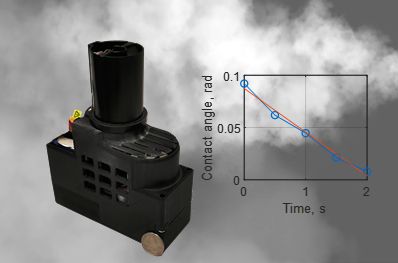Exposure to particulate matter (PM) has been associated with various adverse health effects. A large fraction of these particles consists of volatile or semi-volatile materials, such as emissions generated from cooking, automobiles and tobacco products. The dynamics of the evaporation process of such volatile particles has been an active area of research since the 19th century. However, existing measurement methods are either low throughput or unable to provide direct volatility measurement of particulate matter.
A team of UCLA engineers and environmental health scientists created a new method that can directly measure the volatility of particulate matter using a portable microscope that is powered by deep learning. UCLA team’s volatile particle measurement system is based on a cost-effective and mobile air quality monitoring device that records holographic images of aerosols that are captured on a transparent sticky sampling pad. These acquired holograms are then rapidly reconstructed using a deep neural network to dynamically image the evaporation process of aerosols and measure their volatility constants.
In their recent manuscript published in ACS Sensors, a journal of the American Chemical Society, researchers applied this volatility measurement system to characterize aerosols that are generated by electronic cigarettes (e-cigs). E-cigs have gained worldwide attention, primarily due to their unprecedented popularity over the last decade among never-smoking adolescents and young adults. The use of an e-cig generates an inhalable aerosol by heating and vaporizing a special liquid (also known as e-liquid), which typically uses propylene glycol and vegetable glycerin as the solvents to dilute nicotine and flavoring compounds. The UCLA team revealed a negative correlation between e-cig generated particle volatility and vegetable glycerin concentration in the e-liquid. Furthermore, the addition of other chemicals, such as nicotine and flavoring compounds, reduced the overall volatility of e-cig generated aerosols.
“The presented device can help us better examine the dynamic behavior of e-cig aerosols in a high-throughput manner, potentially providing important information for e-cig exposure assessment via, for example, second-hand vaping. This new method can also be broadly applied to rapidly characterize other types of volatile particulate matter” said Dr. Aydogan Ozcan, the Chancellor’s Professor of Electrical and Computer Engineering at UCLA and an associate director of the California NanoSystems Institute, who is the senior corresponding author of the work.
This research was led by Dr. Ozcan, in collaboration with Dr. Yifang Zhu, a Professor of Environmental Health Sciences (EHS) at UCLA. The other authors of this work are graduate students Yi Luo, Yichen Wu, Liqiao Li, Yuening Guo and Ege Çetintaş. Dr. Ozcan also has UCLA faculty appointments in bioengineering and surgery, and is an HHMI professor.
Link to paper: https://pubs.acs.org/doi/10.1021/acssensors.1c00628
Article by Maxim Batalin. Image by Ozcan labs. Originally published June 10, 2021 at https://www.biophotonics.world/magazine/article/1709/rapid-measurement-of-aerosol-volatility-using-a-deep-learning-based-portable-microscope

